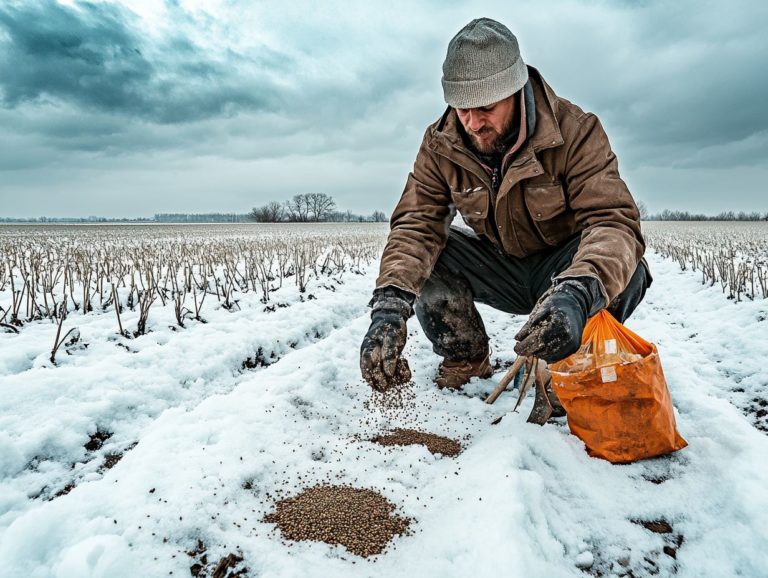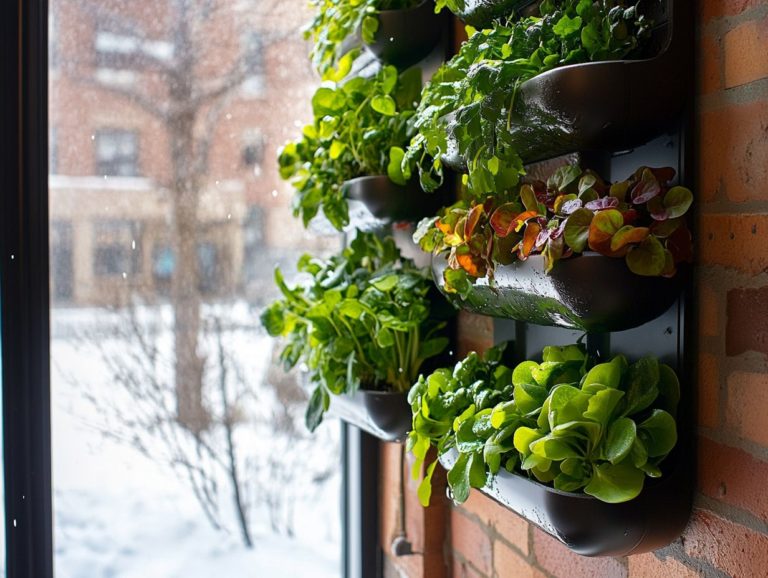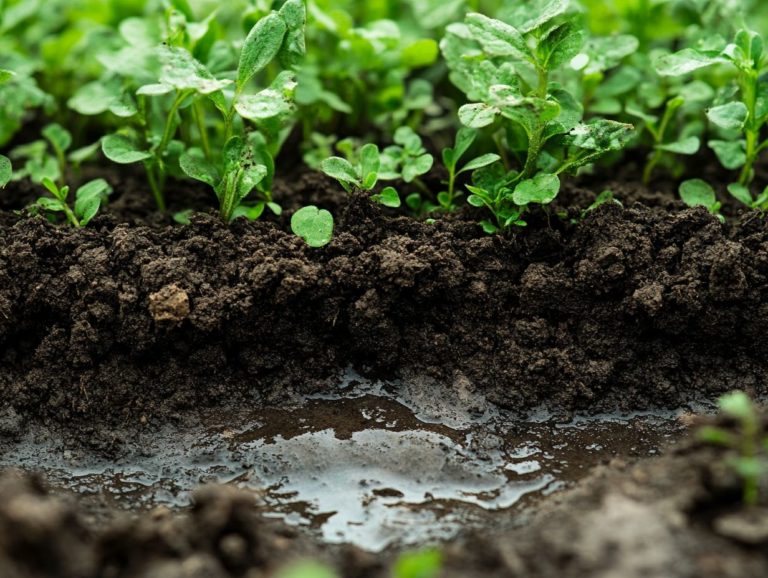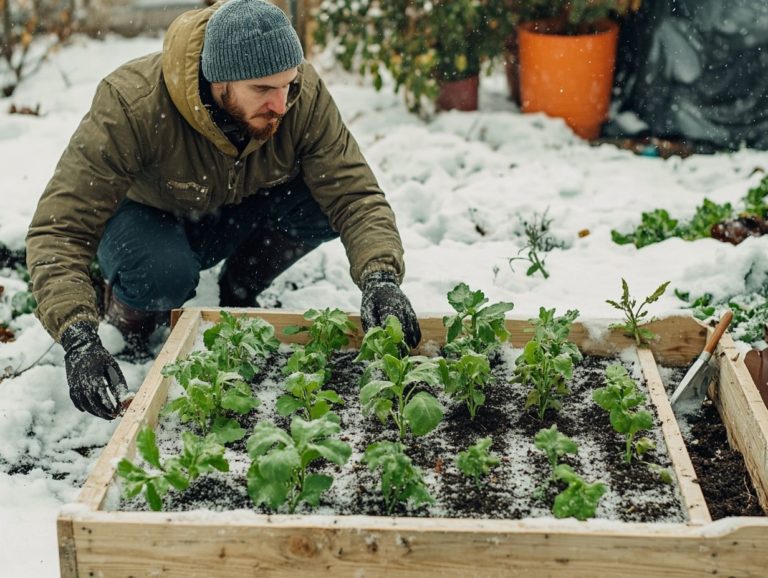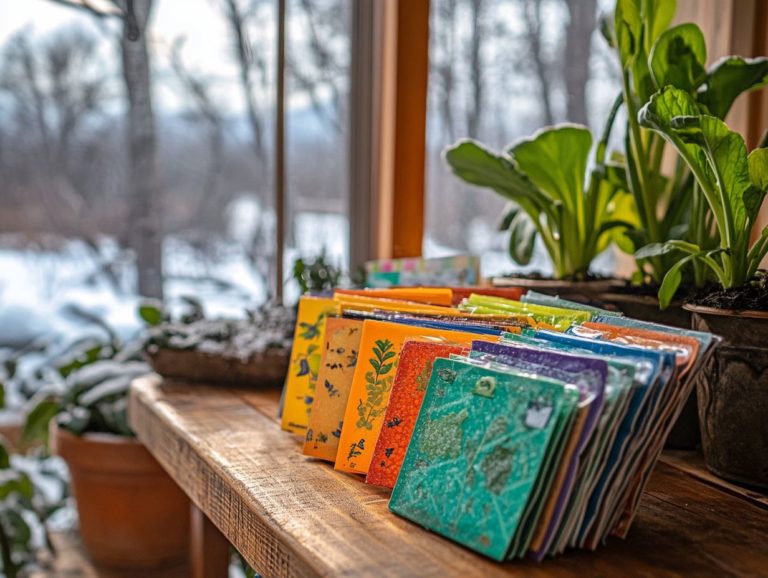How to Choose the Right Location for a Cold Garden?
Cold gardens present a remarkable opportunity for you to cultivate an impressive variety of plants in cooler climates.
Finding the perfect spot for your garden can lead to incredible success! It’s essential to consider several key factors, including climate, sun exposure, soil quality, and water availability.
As you design your garden, focus on selecting the right plants and incorporating protective structures to enhance their growth.
Embrace practical tips for maintaining your cold garden and uncover the myriad environmental and personal benefits that accompany this fulfilling pursuit.
Contents
- Key Takeaways:
- Factors to Consider when Choosing a Location
- Designing a Cold Garden
- Maintaining a Cold Garden
- Benefits of Cold Gardens
- Frequently Asked Questions
- What factors should I consider when choosing a location for a cold garden?
- Is it better to have a north or south facing location for a cold garden?
- How can I determine the quality of the soil in a potential cold garden location?
- Should I choose a location with full sun or partial shade for a cold garden?
- Can I still have a cold garden if I live in a warmer climate?
- What are some common mistakes to avoid when choosing a location for a cold garden?
Key Takeaways:

- Act now! Check your climate, sun exposure, soil quality, and water availability before you start your garden.
- Choose plants that can thrive in colder temperatures and use structures for protection from harsh weather conditions.
- Regular maintenance and pest control are essential for a successful cold garden.
- Cold gardens offer both environmental and personal benefits.
What is a Cold Garden?
A cold garden is a specialized approach to gardening that you might consider if you live in areas with harsh climates, like Wyoming. Here, you can utilize season extenders and raised beds to stretch the growing season, even when early frosts and limited sunlight threaten your plans. For more details on this method, check out how to plan your cold-climate garden layout. This method often embraces heirloom seeds, which are valuable for their resilience and adaptability.
By leveraging raised beds, you enhance soil drainage and warmth two crucial factors for plant growth in those chillier conditions. Heirloom seeds provide a diverse selection of plants that can handle frost.
Understanding plant hardiness zones is crucial for selecting varieties that thrive in your specific climate. Local gardening practices, such as mulching and using frost covers, can help extend your growing season, amplifying the success of your garden.
With some strategic planning and a keen eye on seasonal changes, cultivating a flourishing cold garden can become a truly rewarding endeavor. Learning how to choose the right plants for cold weather can greatly enhance your gardening success.
Factors to Consider when Choosing a Location
Choosing the perfect spot for your garden is essential for achieving gardening success, particularly in colder climates like Wyoming. Understanding why choose cold-climate gardening involves considering elements such as small climate differences, soil quality, and sun exposure, which play pivotal roles in influencing plant growth and the overall vitality of your garden.
Climate and Temperature
Know your gardening zone’s climate and temperature. This knowledge is key to mastering cold gardening. If you’re looking to connect with others, understanding how to find a cold-climate gardening community can also enhance your experience. Different plant species have unique tolerances to frost dates and temperature swings, so it’s crucial to know what you’re working with.
These factors significantly impact which crops will flourish and when you should plant them. Don’t wait too long to know your local frost dates, or you risk losing tender seedlings! Temperature fluctuations during the growing season can affect flowering and fruiting, ultimately influencing your overall yield.
Engaging with gardening experts can offer invaluable insights into the best vegetable varieties and optimal planting times, giving you the power to maximize productivity while adapting to the ever-changing climate.
Sun Exposure
Maximizing sun exposure is vital for a flourishing cold garden. Planning a cold-climate vegetable garden involves selecting a location with southern exposure to provide the sunlight your vegetables crave, significantly boosting your gardening success.
Different plant species have unique light preferences. Some bask in full sun, while others thrive in the gentle embrace of partial shade. Understanding these light requirements is essential for anyone looking to cultivate a diverse and vibrant garden.
To effectively assess your garden locations, take the time to observe sun patterns throughout the day. Note how shadows shift; this will help you pinpoint the best spots for each type of plant. By optimizing these locations, you can create a harmonious environment tailored to each plant’s needs, ensuring robust growth and maximizing your harvest potential.
Start your cold garden journey today!
Soil Quality
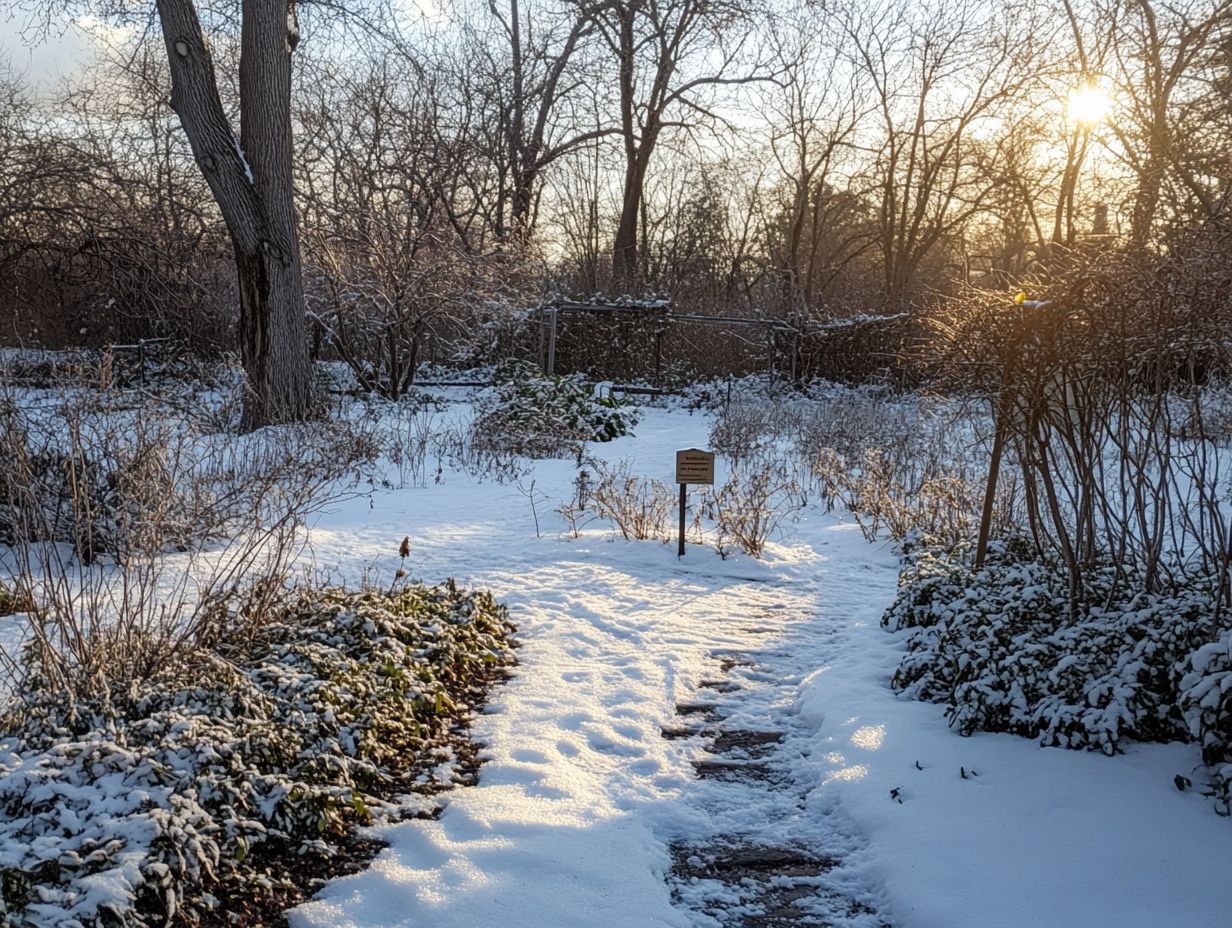
High-quality soil enriched with organic matter is the cornerstone of a successful cold garden. It promotes healthy plant growth and ensures optimal drainage for effective cultivation.
To assess soil quality, conduct a soil test that analyzes pH levels, nutrient content, and other essential factors. This initial assessment will guide you in selecting the right amendments to enhance nutrient availability.
Incorporating organic matter, such as compost or well-rotted manure, nourishes the soil and improves its structure and aeration. This makes it more resilient during the colder months.
Use smart drainage solutions, like raised beds or leveling the ground, to prevent waterlogging and root rot.
When sourcing your gardening supplies, seek local suppliers that prioritize organic materials and sustainable practices. This ensures your soil remains robust and capable of supporting thriving plants throughout the chilly growing season.
Water Availability
Ensuring adequate water availability is essential in cold gardening. Establish easy access to watering and a dependable outdoor water source to influence the growth and maturity of your plants significantly.
In colder climates, timing is everything. Make water available in a way that meets the plant’s needs without risking frost damage. Thoughtful planning of your irrigation systems like drip irrigation or soaker hoses guarantees water efficiently reaches the roots while minimizing waste.
A watering schedule that accounts for temperature fluctuations helps keep moisture levels consistent. Watering in the morning provides extra protection against frost by allowing excess moisture to evaporate during the day, ensuring hydration for your plants during the cooler nights.
Designing a Cold Garden
Designing a cold garden demands careful attention to plant selection and a thoughtful arrangement of structures that offer protection from harsh weather conditions. Additionally, knowing how to select the right soil for cold gardens can elevate your overall gardening experience.
Plant Selection and Arrangement
Choosing the right plant varieties for your cold garden is essential. To find the best options, consider how to select cold-hardy plants for your garden. Incorporating heirloom seeds enhances biodiversity and yields a rich vegetable harvest tailored to your gardening location.
These unique seeds, often passed down through generations, are resilient and offer a delightful array of flavors and colors that can elevate any meal. Consider your local climate conditions, as some vegetables thrive in cooler temperatures. Thoughtful arrangement of your plants optimizes sunlight exposure and maximizes the available space.
Group plants with similar sunlight and water needs to ensure each receives its fair share of nutrients. This results in a thriving and productive garden.
Structures and Protection
Implementing protective structures like greenhouses and cold frames is crucial for safeguarding your plants against harsh winds and extreme temperatures. This allows you to extend your growing season.
These structures create a microclimate a small area with different weather conditions than the surrounding area that can significantly boost your plants’ vitality and yield. For instance, greenhouses trap heat from sunlight, maintaining a consistent temperature that promotes optimal growth even during chilly nights. Cold frames are perfect for getting a head start on seedlings in the spring or extending your harvest into the fall.
When setting up these protective spaces, ensure proper ventilation to avoid overheating and humidity issues. Use high-quality materials that maximize light penetration. Incorporating thermal mass elements, like water barrels, can further stabilize temperature fluctuations, ensuring your plants thrive throughout the seasons.
Have you chosen the right plants for your cold garden yet? Don’t wait! Start planning your cold garden now to enjoy a fruitful harvest this season.
Maintaining a Cold Garden
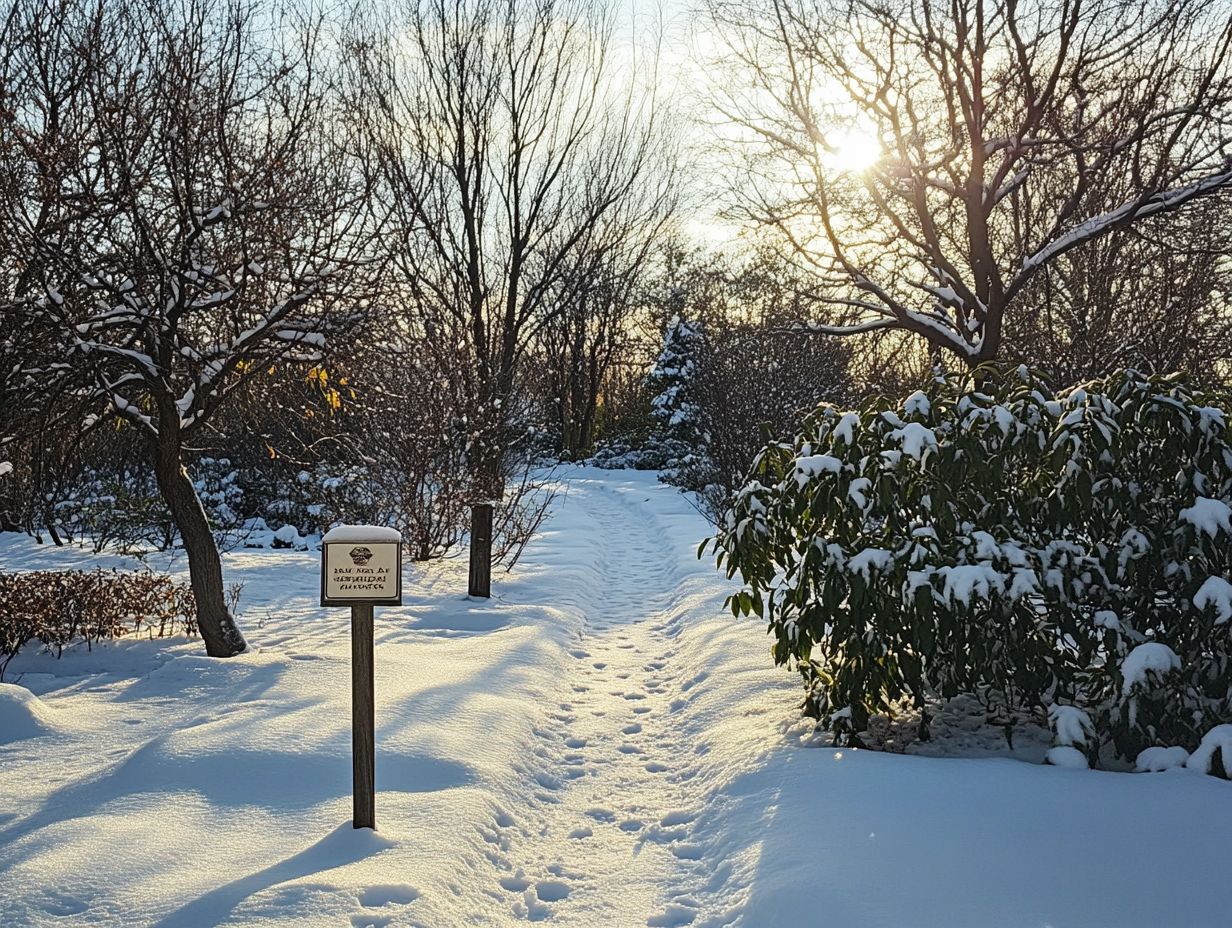
Maintaining a cold garden requires your attentive seasonal care. This includes carefully watching for pests and diseases. Additionally, understanding microclimates in your cold garden ensures that your plants thrive and yield a generous harvest throughout the growing season.
Seasonal Care and Maintenance
Proper seasonal care and maintenance are crucial for your gardening success. Timely interventions can significantly boost plant growth and lead to a bountiful harvest.
If you’re tending to a garden in colder climates, it’s essential to understand the unique challenges posed by low temperatures and shorter growing seasons. To maximize your yield, follow a well-defined planting schedule that aligns with frost dates and includes frost-resistant varieties, which are plants that can survive cold weather.
Establishing a consistent watering routine is vital, as cold weather can create misleading signs of moisture, leaving the soil deceptively dry. Incorporating organic fertilizers, which are natural substances that add nutrients to the soil, at the start of the growing season can enhance nutrient availability and support robust growth.
Experienced gardeners often suggest mulching in late autumn to protect roots from freezing temperatures. This practice ensures your garden not only survives but thrives during the chilliest months.
Pest and Disease Control
Effective pest and disease control is essential for maintaining a vibrant cold garden. By adopting proactive strategies, you can ensure your plants stay resilient against common threats.
Using various methods allows you to cultivate an environment that repels pests and nourishes plant vigor. Regularly inspect your plants for early warning signs, such as yellowing leaves or unusual spots. These can indicate stress or an impending infestation.
Employing organic solutions like neem oil or insecticidal soaps manages unwelcome guests without harming beneficial insects that contribute to your garden s health. Additionally, practicing crop rotation (changing the types of plants grown in a specific area each season) and companion planting (growing different plants together to benefit each other) enhances soil health and pest resistance.
By integrating these organic practices and staying vigilant, you can mitigate risks to your plants’ health while fostering a flourishing ecosystem.
Benefits of Cold Gardens
Cold gardens offer numerous advantages, allowing you to cultivate sustainable food sources in challenging climates. They promote biodiversity and enhance local ecosystems, creating a thriving environment for both plants and wildlife.
Embrace this approach and make a real difference! You can enjoy the fruits of your labor while positively impacting your surroundings.
Environmental and Personal Benefits
The environmental benefits of cold gardens are remarkable. They improve soil quality and create a welcoming habitat for beneficial insects. On a personal level, you ll experience enhanced wellness and the joy of gardening.
By nurturing these gardens, you play a vital role in fostering a healthier ecosystem. You support biodiversity while building resilience against climate change. Embracing sustainable practices like composting enriches the soil naturally and minimizes waste, making your gardening efforts a low-impact endeavor.
Community gardening initiatives provide fantastic opportunities for social bonding and heightened ecological awareness. You ll discover the power to connect with both nature and your neighbors. This interconnected approach fosters a deep sense of responsibility for the environment, reminding us that even small actions can lead to significant positive changes in our landscapes and personal well-being.
Frequently Asked Questions
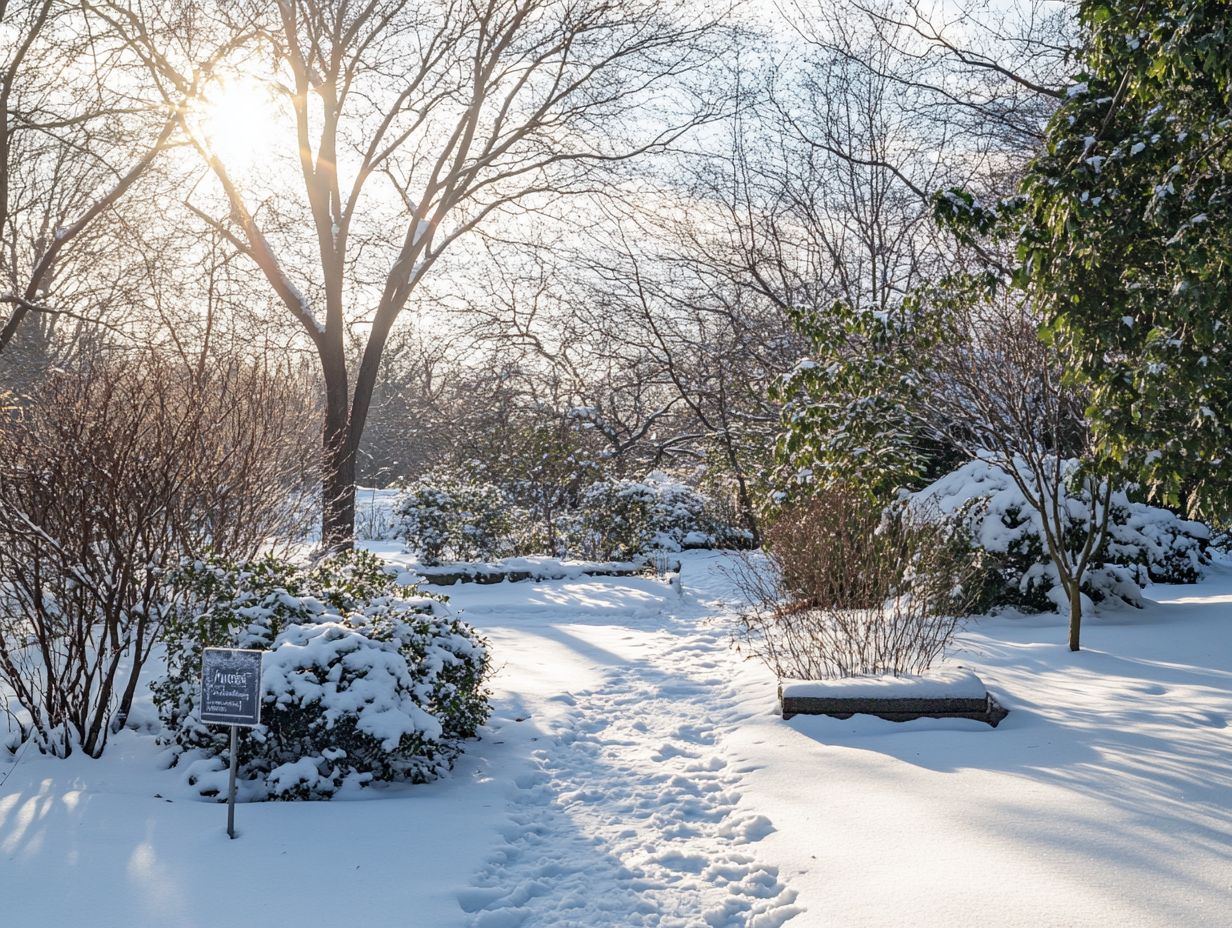
What factors should I consider when choosing a location for a cold garden?
Important factors to consider include the amount of sunlight and shade, the quality of the soil, and protection from harsh winds.
Is it better to have a north or south facing location for a cold garden?
A north-facing location receives less sunlight, which is great for cold-loving plants.
A south-facing spot works too if you ensure there s enough shade and protection from strong winds.
How can I determine the quality of the soil in a potential cold garden location?
The best way to check soil quality is through a soil test.
You can purchase a do-it-yourself (DIY) kit or have a professional test the soil for you.
This will help you see if the soil is suitable for a cold garden and what amendments may be needed.
Should I choose a location with full sun or partial shade for a cold garden?
It depends on the types of plants you want to grow.
Cold-loving plants generally thrive in partial shade, but some might do well in full sun if they have enough moisture and protection from wind.
Can I still have a cold garden if I live in a warmer climate?
Yes, you can create a cold garden in a warmer climate!
You may need to select plants that adapt to warmer temperatures and provide extra shade and moisture for them to thrive.
What are some common mistakes to avoid when choosing a location for a cold garden?
Avoid locations with poor drainage or too much direct sunlight.
Don t choose low-lying areas where cold air can settle.
Also, consider the specific needs of the plants you want to grow.


